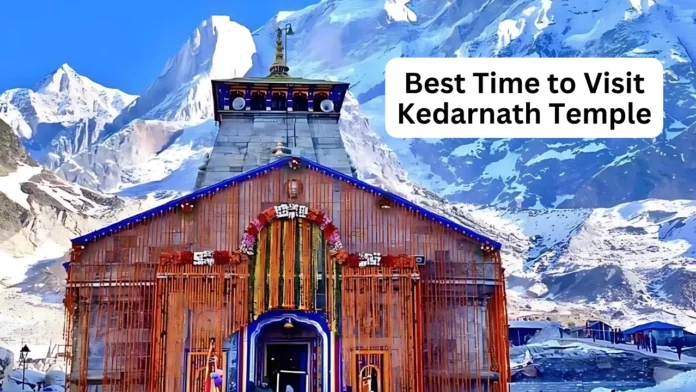Best Time to Visit Kedarnath Temple, a revered Hindu pilgrimage site nestled in the heart of the Himalayas, isn’t only an area of spiritual significance but also a natural surprise. Located in the Indian state of Uttarakhand, Kedarnath Temple is dedicated to Lord Shiva and is one of the twelve Jyotirlingas, making it a destination of titanic spiritual significance. Besides its spiritual aura, Kedarnath Temple is famous for its breathtaking landscapes, pristine surroundings, and challenging trekking trails. To in reality experience the magic of Kedarnath, it’s essential to pick out the right time to visit. This complete guide will help you understand the friendly time to visit Kedarnath Temple, thinking of climate, accessibility, and the non-secular significance of the place.
What Is the Best Time to Visit Kedarnath Temple?
April to June is the best time to visit Kedarnath Temple, imparting good weather and accessibility for pilgrims and tourists alike. During this era, the temperature ranges from 5°C to twenty°C, the snow starts to soften and the well-known Kedarnath Temple turns into a hand to devotees. May is a high month and stays crowded. The doors of the respected Kedarnath Temple open in April or early May, marking the commencement of the pilgrimage season. The pre-wintry weather months from September to October are every other suitable time to visit Kedarnath Temple.
Kedarnath Temple stays closed for 6 months from November to March each year due to snowstorms in the place (Exact dates are announced every year). After November, the place experiences heavy snowfall, making it difficult and dangerous to travel. During this time the temperature ranges from around 5 degrees Celsius to 18 degrees Celsius. The monsoon season in Kedarnath lasts from July to August and brings heavy rainfall, inflicting landslides and challenges.
Also Read:- The best time to visit Azerbaijan | Things to Do in Ireland
Top 10 Tourist Attractions in Kedarnath with Their Opening and Closing Times
On your next experience in Uttarakhand, make sure to peer at the top 10 locations to visit in Kedarnath Temple to experience a superb time away from the push. These locations allow devotees to interact in non-secular activities while presenting the most outstanding views. Let’s dive right into the spiritual places!
1) Kedarnath Temple
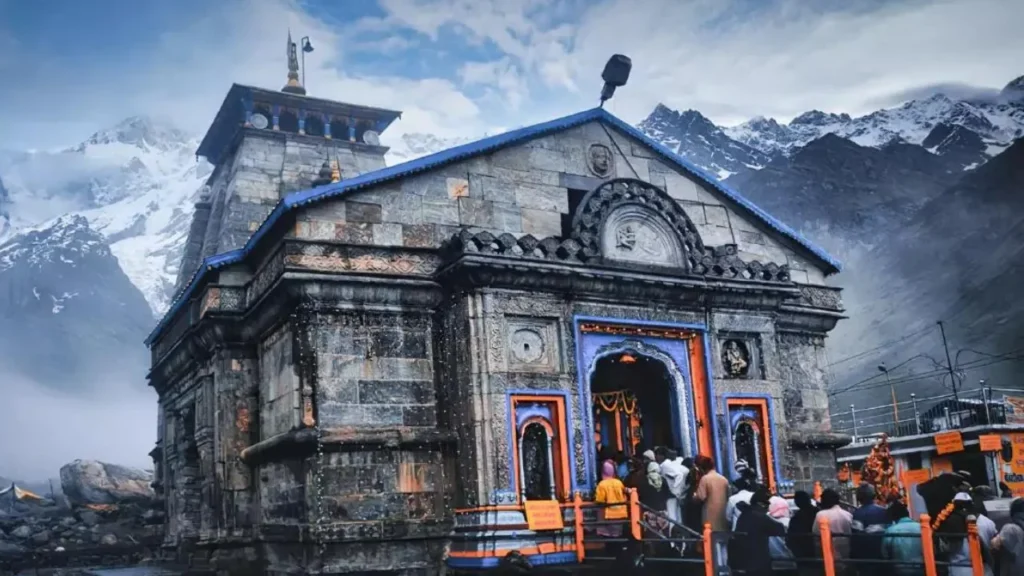
Kedarnath Temple is the primary centre of Attraction in Kedarnath. It is 1 of 12 Jyotirlinga of Lord Shiva and 1 of 5 Shrines of Panch Kedar (Tungnath, Rudranath, Madhyamaheshwar and Kalpeshwar). But, the Holy Pilgrimage of Char Dham has resumed with the same fervour in Kedarnath.
| Place | Kedarnath Temple |
|---|---|
| Opening time | 4 am |
| Closing time | 9 pm |
2) Gauri Kund Temple

Located in Guptakashi, Gaurikund is the place to begin at Kedarnath Temple and is considered the last road before the yatra begins. It is plushly placed on the banks of the Mandakini River. Located at an altitude of 2000 metres, the Gaurikund temple and Gaurikund Lake are critical landmarks of the place.
While taking a bathtub, Goddess Parvati appointed him as a protector at the entrance. Ganesha stopped Lord Shiva on arrival to enter. Competitive Lord Shiva chopped the top of Ganesha. On understanding this, Goddess Parvati insisted God Shiva carry again Ganesha to lifestyles. Shiva took the top of the wandering head and located him on Ganesha boy to convey him to lifestyles.
With the 2 prime places to visit, Gauri Lake and Gaurikund Temple, you will experience the lush views of brilliant greenery.
| Place | Gauri Kund Temple |
|---|---|
| Opening time | 4 am |
| Closing time | 9 pm |
3) Vasuki Tal
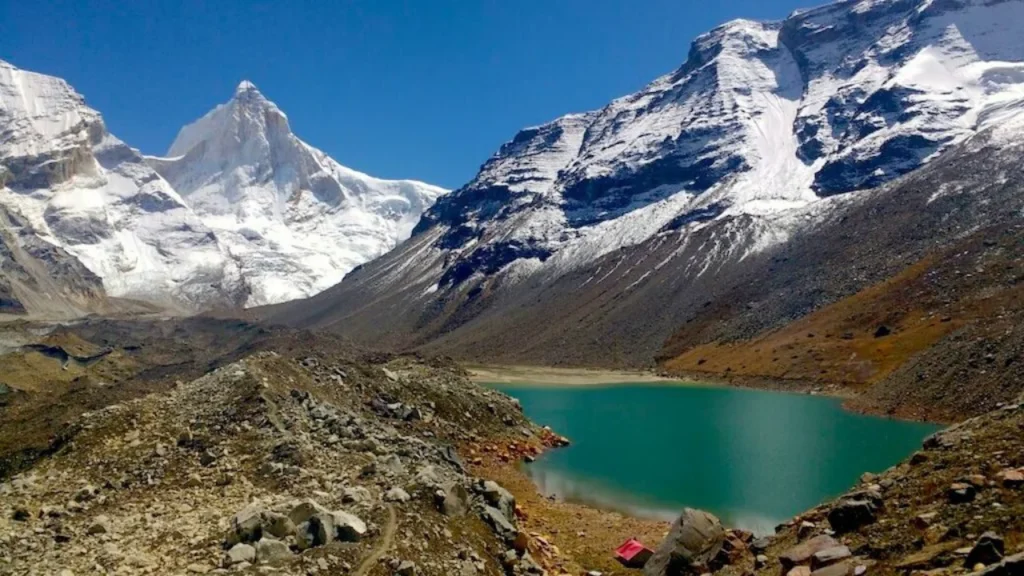
Vasuki Tal is named after the Legendary serpent Vasuki who keeps his shadow over Sleeping Lord Vishnu. It is thought that Vasuki Tal is the area in which Lord Vishnu took the tub. Lake has stunning aquatic flora and herbs flowering in it that are endemic to the Himalayas.
Situated at an altitude of 4,150 m above sea stage, this serene lake offers surprising views of the Chaukhamba peaks and the Mandakini Valley. A continuous ascent from Kedarnath Temple to Vasuki Tal or Vasuki Lake makes for a good trek. Trekking to the lake from Gaurikund may be a challenge for first-time trekkers. If you don’t have the time or energy to take the 24-km-long trek, you may first reach the Kedarnath Temple from Gaurikund through a pony experience. From the temple, it is an 8 km trek to the lake that is well worth the attempt. The trek from Kedarnath Temple to Vasuki Tal can be easily finished in a day’s time. According to Hindu mythology, Lord Vishnu is said to have taken a bathtub in the lake on the auspicious competition of Raksha Bandhan.
| Place | Vasuki Tal |
|---|---|
| Opening time | 5 am |
| Closing time | 6 pm |
4) Bhairavnath Temple
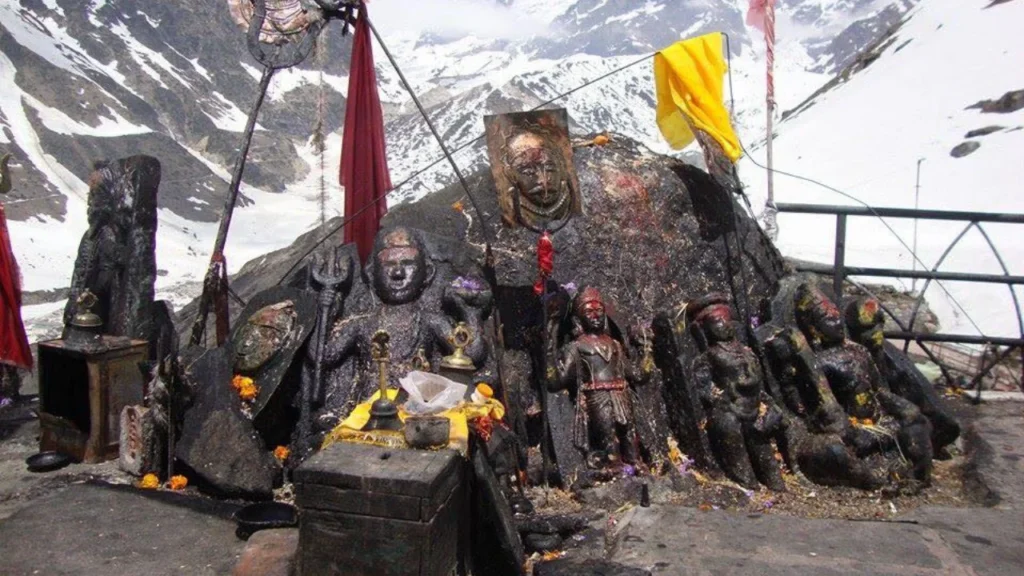
This awesome temple devoted to God Bhairav, the primary Gana of Lord Shiva, stands now, not some distance from the Kedarnath Temple. Nestled on a hill, this temple is one of the various top attractions in Kedarnath. It is said that the parents of the Kedarnath temple are the gods of this temple.
It is thought that Lord Bhairav, also called Kshetrapal, continues to watch over the temple and the whole Kedarnath Temple location while it is closed at some point of the extreme winters. Visit this temple no longer only for the darshan; the breathtaking vistas of the valley are going to WOW you.
| Place | Bhairavnath Temple |
|---|---|
| Opening time | 6 am |
| Closing time | 8 pm |
5) Shankaracharya Samadhi

Towards the end of his world travels, mythical truth seeker and saint Adi Shankaracharya of the 8th century paid a visit to Kedarnath. His final destination earlier than departing from his earthly body was Kedarnath. The Shankaracharya Samadhi was built in an identical location in which he obtained a non-secular awakening.
Anyone who visits the shrine is stated with a purpose to heal from important troubles and terrible energies by touching the spatula lingam interior. Adi Shankaracharya himself evolved the hot spring located here as well. It was achieved with the goal of relieving the pilgrims’ pain. And it must be on your Kedarnath Temple travel itinerary.
| Place | Shankaracharya Samadhi |
|---|---|
| Opening time | 4 am |
| Closing time | 9 pm |
6) Chandrashila

You know it’s one of the locations that need to be visited along with your family, no longer just to seek advantages but also to take in the beauty surrounding this place. Set 4000 metres above sea level, Chandrashila Peak is one of Kedarnath’s most visited locations. It is thought that when defeating Ravana, Lord Rama prayed to Lord Shiva right here. Ram seeks forgiveness for his misdeeds by meditating in this sacred land after he killed Ravana, ending the Rakshasa clan. Chandradev, also called the Moon God, is said to have spent years paying for his misdeeds here.
Trekkers should travel 4.5 m from Chopta, the mountain with the best Shiva temple, to reach Chandrashila, that’s tough travel. An amazing 360-degree panorama of the Himalayan range and famous peaks in the area, along with Nanda Devi, is given by Chandrashila.
| Place | Chandrashila |
|---|---|
| Opening time | 6 am |
| Closing time | 7 pm |
7) Mayali Pass
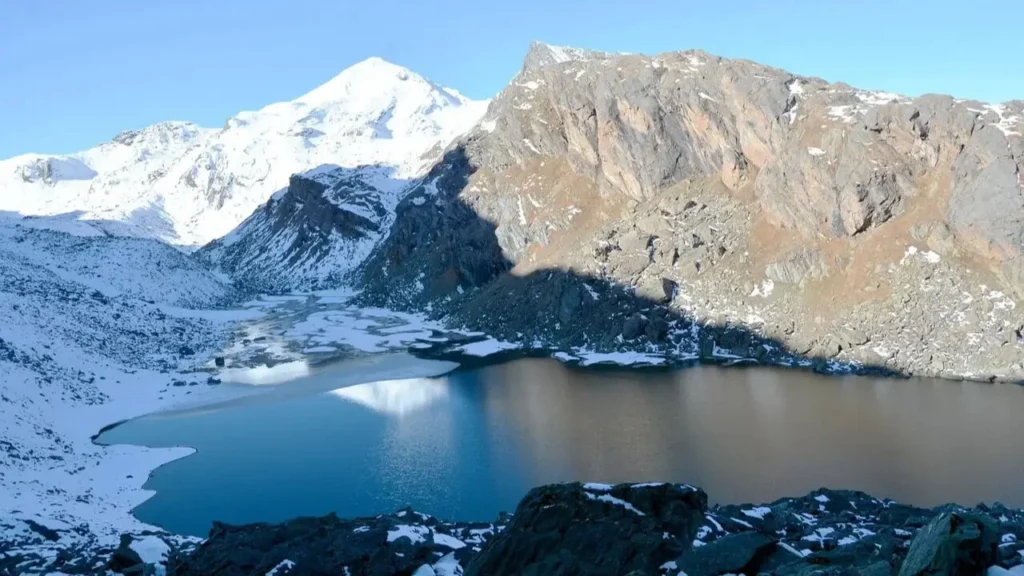
Situated at an insignificant distance of 15 km from Kedarnath, this bypass is a famous travel spot amongst high-altitude hiking fans. Sitting at a whopping elevation of 5,300 metres above sea stage in the valley of Bhilangana, this place gives invigorating views of the snow-capped peaks, lush inexperienced valleys and untouched beauty, which also offers you a view into the Himalayan biosphere. This place is commonly famous for imparting awe-inspiring views of the iconic Thalay Sagar, Kedar dome and other such majestic peaks of the Gangotri location. People generally select to trek from Ghuttu Village to Gaurikund. That’s a hard trek but the results will be more ordinarily unmatched. You can be capable of feeling the pure Himalayan sit back after covering a standard trekking journey of 9 to 10 days.
| Place | Mayali Pass |
|---|---|
| Opening time | 24 hours |
| Closing time | 24 hours |
8) Gandhi Sarovar / Chorabari Tal

Located at an elevation of 3,900 metres above sea level, Gandhi Sarovar is a small glimmering lake which holds crystal clean water. It is likewise popularly called Chorabari Tal because of its area in close proximity to the mouth of the Chorabari Bamak Glacier. Sitting on the foot of the legendary Kedarnath and Kirti Stambh Peak, the lake is known after Mahatma Gandhi, considering the fact that his ashes had been dispersed on this lake. The lake is ready amidst the tall and alluring deodar tree forests and cascading waterfalls, which gives its tourists a number of the most picturesque views of the environment. The lake can be reached after making a scenic trek of 14 km from Gaurikund through an iron bridge of Kedarnath, which links you to the Sarovar. The path for Gandhi Sarovar is in the shape of a well-paved way which takes you across some of the most captivating and breathtaking views.
| Place | Gandhi Sarovar / Chorabari Tal |
|---|---|
| Opening time | 24 hours |
| Closing time | 24 hours |
9) Rudra Cave

Located simply 1 km from Kedarnath Temple, Rudra Cave is a stone underground meditation cave that Garhwal Mandal Vikas Nigam maintains. It can accommodate 1 individual. The current cave gives 1 unmarried mattress with bedding, a connected washroom with a geyser, an SIP telephone, and a heater. You can witness each Bhairavnath Temple and Kedarnath Temple from the cave.
GMVN’s Rudra Meditation Cave in Kedarnath is a special place for individuals who love meditation. It’s a stone cave with a wooden door and a window that looks out to the Kedarnath Temple and Bhairavnath Temple. This cave is best for each person who wants to stay alone and aware of their meditation in Kedarnath Dham. It’s a small space however well-installed with a mattress, connected toilet, geyser, heater, SIP smartphone, and a calling bell. These meditation caves are built by using the Nehru Mountaineering Institute and managed by Garhwal Mandal Vikas Nigam. In Kedarnath, there are 3 of these Rudra Caves.
| Place | Rudra Cave |
|---|---|
| Opening time | 24 hours |
| Closing time | 24 hours |
10) Triyuginarayan Temple
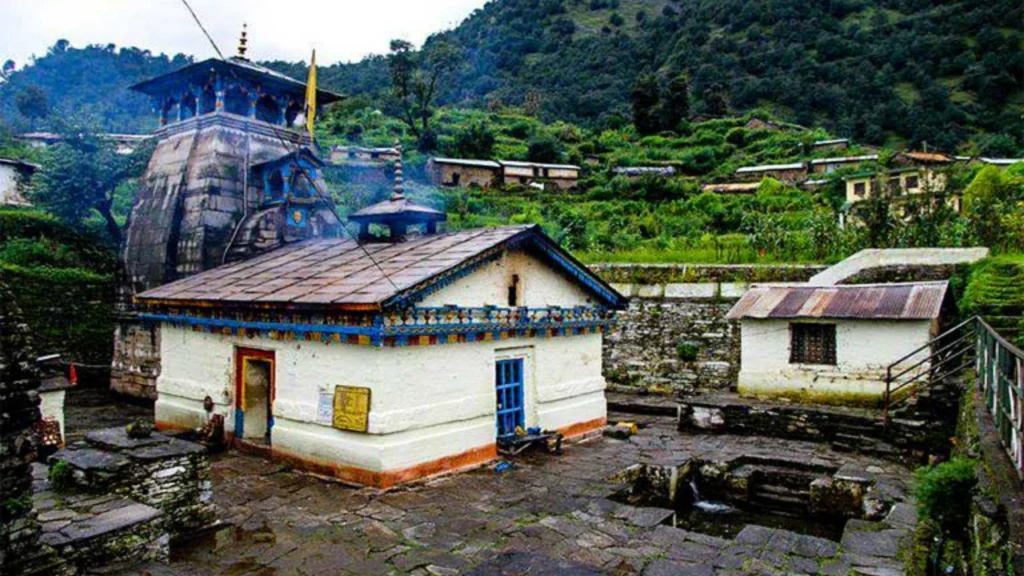
Known as the capital of Himavat, Triyuginarayan is well-known as the venue for the celestial marriage of Goddess Parvati and Lord Shiva. It is assumed that the holy place of their ‘viva-mandap’ is the Triyuginarayan Temple. About 1200 years in the past, Philosopher Adi Shankaracharya believed in making this temple with 4 kunds – Saraswati, Rudra, Brahma, and Vishnu.
| Place | Triyuginarayan Temple |
|---|---|
| Opening time | 4 am |
| Closing time | 8 pm |
The best time to visit Kedarnath is to get a much smaller crowd
The cold months from December to March are when Kedarnath witnesses the least variety of tourists. During this time, the entire area studies heavy snowfall, freezing temperatures, and vicious climate situations.
The wintry weather snow reduces road access to Kedarnath. The 15-kilometer uphill trek from Gaurikund to Kedarnath will become extremely volatile and difficult due to snow-included paths. As a result, very few devotees and tourists attempt to reach the Kedarnath temple throughout the height wintry weather months.
However, for the ones willing to brave the cold, cold presents a unique risk to experience Kedarnath in all its serene glory. The snow-capped landscapes are stunningly stunning. The temple remains open for some hours daily and can be visited with minimum crowds. Watching the evening aarti in the glow of Div diyas gives a paranormal experience.
How to Reach Kedarnath?
To reach Kedarnath, one of the holiest Hindu pilgrimage sites in India, you may follow these routes:
1) How to reach kedarnath From India
Kedarnath is accessible from the foremost Indian towns by road and helicopter. The nearest town with precise connectivity is Rishikesh, 226 km away. From Rishikesh, you may travel by road to Sonprayag and then take a 20 km trek or rent a pony or palanquin to reach Kedarnath. Optionally, helicopter services operate from Phata and Sersi during the pilgrimage season, giving a faster but more cost-effective option. The trek is steep but scenic, passing through forests and presenting views of the Himalayas.
2) How to reach kedarnath From the United States
Tourists from the USA usually fly into Delhi or Mumbai. From Delhi, you may take a home flight to Dehradun or reach Rishikesh immediately by train or road. From Rishikesh, follow the Indian path of equality above to reach Kedarnath.
3) How to reach kedarnath From the UK
Tourists from the United Kingdom commonly fly into Delhi or Mumbai and then proceed as described for tourists from America, making use of home flights to reach Kedarnath after which making their way by road or helicopter as per comfort and needs.
These routes provide numerous options depending on your opening point and travel preferences, ensuring accessibility to this sacred destination in the Himalayas.
FAQ’s:-
Which Month is best to visit Kedarnath?
The best time for visiting Kedarnath is from April to June or plan your trip just before winter in September to October. The Kedarnath Dham remains closed from November to March due to extreme weather conditions.
Which month can we get less crowd in Kedarnath?
If you wish to face a smaller crowd in Kedarnath, you must visit during the early summers (March to June) or during the Autumn season (October).
Is there any age limit to visit Kedarnath?
No, there are no age limit restrictions for visiting Kedarnath. However, it is advised for elderly people to consult their doctors before taking up the journey.
